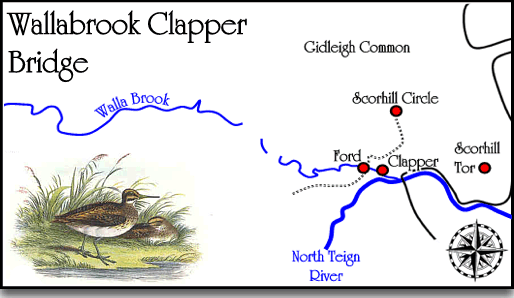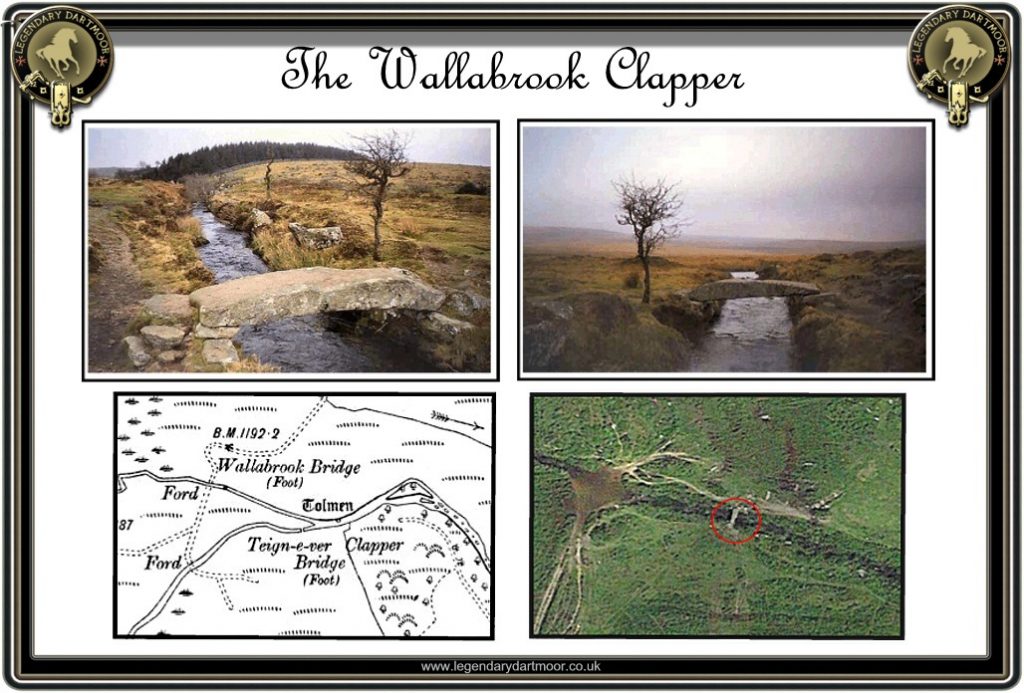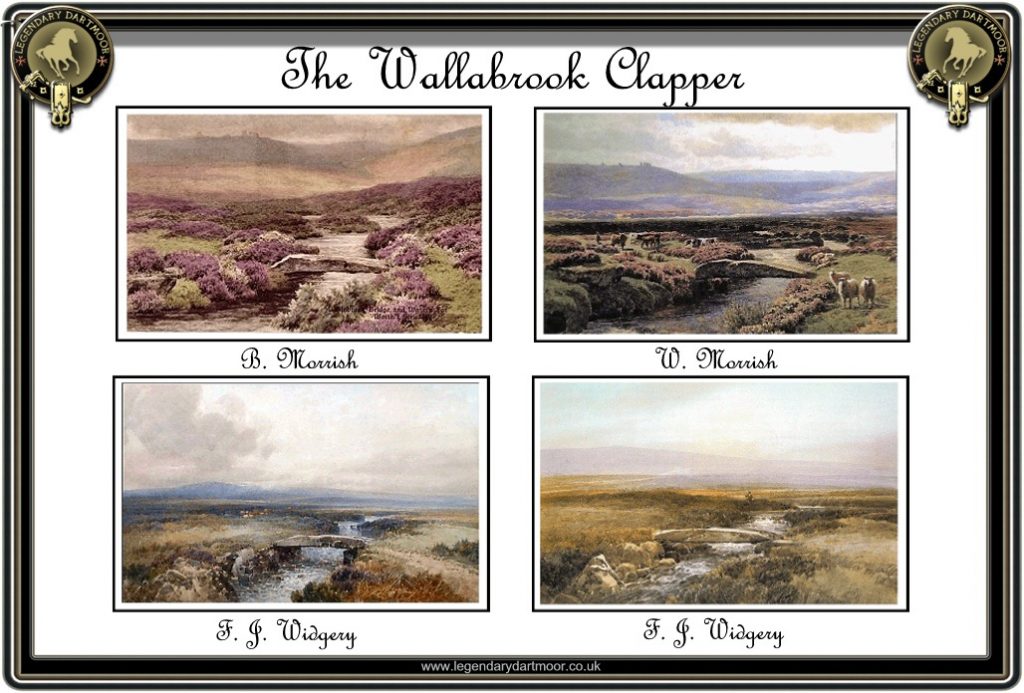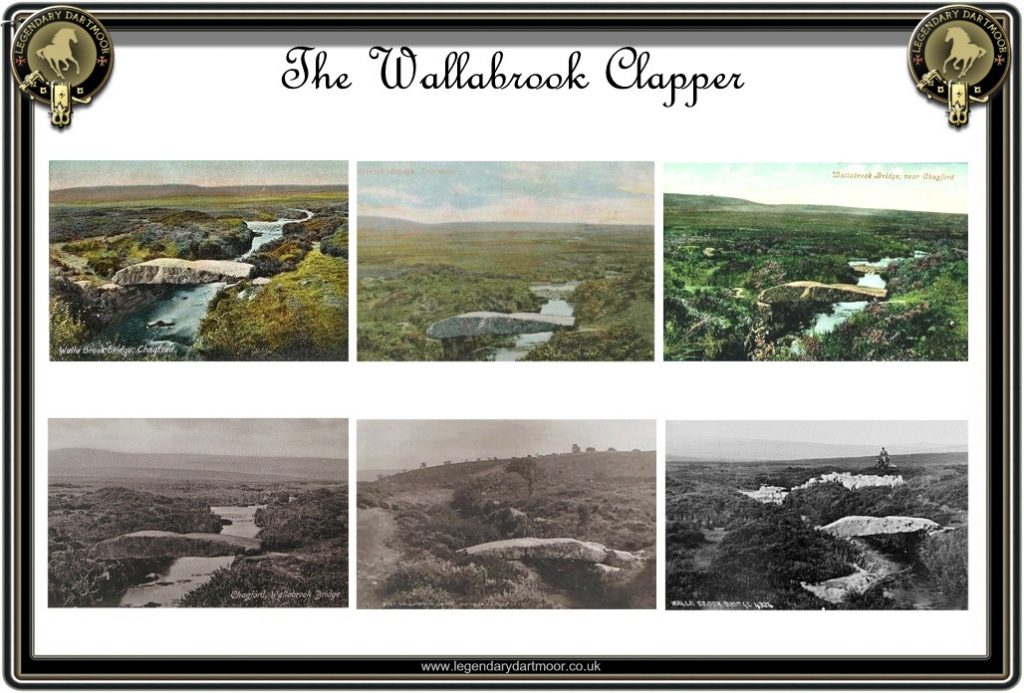
High up on the edge of the North Moor is Wild tor and under its watchful shadow issues the Walla Brook or the Headon River as it is known locally. The whole area around the stream has been worked by the old tinners, much of their activities are still visible and the waters tumble down through ribbons of streamworks. Just before the Walla Brook joins the North Teign River it flows beneath an old, single slab clapper bridge. As Dartmoor clappers go, this one is nothing exceptional, larger than most but smaller than many. There is now way it can ever compete with its famous counterpart at Postbridge in size or popularity but none-the-less it has a character of it own. This clapper is a kind of moorland feature that warrants a second look and maybe a few contemplative moments sat watching the waters cascade beneath its granite span, and possibly few photographs for prosperity.

But in the not too distant past the small clapper bridge attracted a lot of attention. It never really struck me how popular the bridge was until I was looking through my old postcard collection. There are at least 10 in the album and these are by no means the complete collection. The early examples are of paintings then the later ones range through hand coloured photos to sepia, ending up with black and whites. All the major manufacturers issued cards of the bridge, Judge’s, Chapman’s, Frith’s, Valentine’s, to name but a few.
Then a look back at some of the late 19th century artists shows that they too found something magical about the landscape as can be seen in the works below of F. J. Widgery, W. S. Morrish and B. Morrish. The interesting pattern that can be seen when the ‘picturesque’ influence is present is that artists went out into the landscape looking for scenery that depicted the passion of the times for wild rugged places. This then inspired people doing ‘the tour’ to visit these lonely locations and as they became more popular then the early postcard manufacturers sent photographers out to capture the same features. Once again, the sale of the postcards inspired later visitors to ‘don one’s boots’ and go in search of the romantic scenery.
A visitor’s survey of a few years ago revealed that about 80% of tourists never strayed more than 500 yards from their vehicles. Is it therefore a coincidence that the modern-day postcard manufacturers no longer produce images of the Wallabrook Clapper? Is it because people no longer want images of remote wild scenery that very few would recognise and prefer pictures of ponies, crowded ‘honey spots’ and roadside landmarks? Although the Wallabrook Clapper is about a mile from the nearest car park it seems few people are prepared to pay it a visit. Certainly the noted topographical writers found little to inspire the ‘intrepid visitor’, Page, Rowe, Worth, Crossing, and Hemery hardly give the bridge more than a sentence, it is as if they are in too much of a hurry to pass on to Scorhill Circle or the nearby Tolmen Stone. Although in fairness, Rowe does include Widgery’s painting in his book which I suppose is some recognition.
But the clapper is not just an artistic element in the landscape, it has a practical use as well. For centuries the moormen have used it or the nearby ford as a crossing point, a fact that the mounted farmer and his flock of sheep in the postcard above clearly demonstrates. It has been suggested that the little granite bridge first dates back to the Elizabethan era when it would have taken tinners and wayfarers across the waters of the Walla Brook. It is interesting to note that from around the 1950’s the images of the bridge suddenly show two trees standing beside it, as do similar photographs from the 1960’s. But from around the 1990’s their numbers had dwindled to the lone stalwart that can be seen today. When did they appear and when did the unfortunate one disappear?
So if ever you are in need of some peace and solitude where you can sit and stare at some dramatic scenery why not walk the mile to the little Wallabrook Clapper and put the world to rights. Ideally pick a day that follows a spell of heavy rain which will mean the peaty brown waters gushing form the high moors will add some drama to the occasion.
By the way, if you were wondering where the name Walla Brook came from then the Place-Name Society suggests the first element is probably a personal one, Wott being someone’s name, giving ‘Wotesbroke’. This first appears in the 1240 perambulation as Wotesbrokelakesfote meaning the foot of the ‘Wotesbroke lake’.
The Lonely Clapper
The time worn granite clapper bridge
Spans the peat stained moorland brook,
The Dipper bobs as it hunts the midge
People cross with no second look.
Feet from ages long, long past
Have trod across the trusted stone,
The dawn and dusk have shadows cast
The sun has shone and cruel winds blown.
Men have come with brush in hand
To paint the scene through expert eye,
People followed to this desolate land
In search of something they know not why.
The rook as it sits in the solitary tree
Looks down on all that pass below,
He knows the secrets of you and me
And silently lets us cross the moorland flow.
 Legendary Dartmoor The many aspects past and present of Dartmoor
Legendary Dartmoor The many aspects past and present of Dartmoor




I have a ? Print of the wallabrook clapper. My parents bought it on honeymoon in the late ’20s. Im pretty sure it’s a print but have never taken it from its frame. I would like to see the paintings by B. Morrish mentioned as this is the signature on mine.